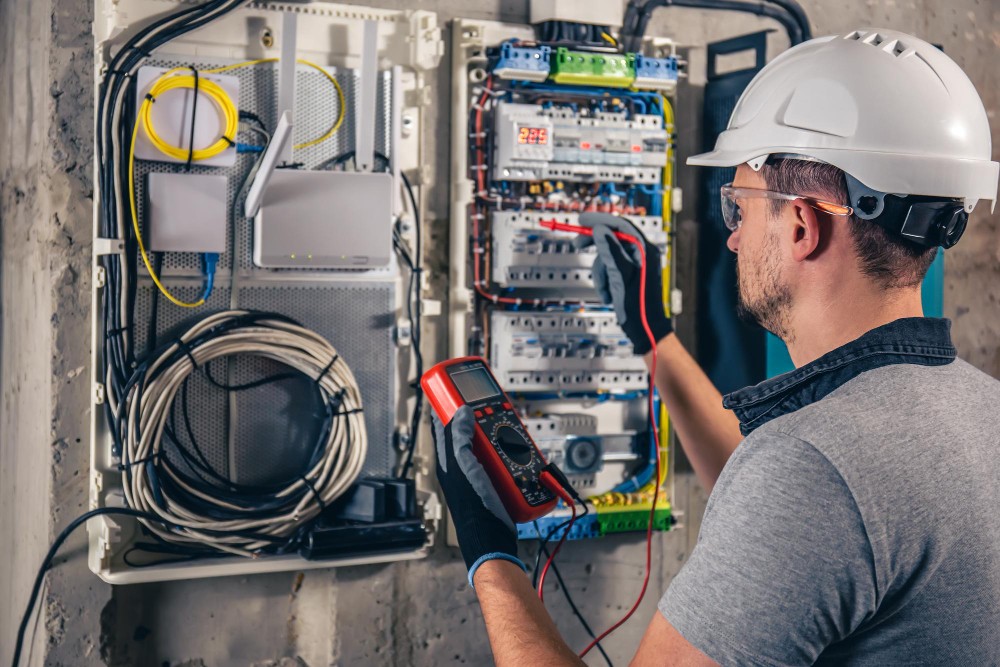The Intersection of Technology and Emergency Electrical Services: Enhancing Safety and Efficiency
by siteadmin

In an age defined by rapid technological advancements, the field of emergency electrical services is not immune to innovation. From smart diagnostic tools to real-time monitoring systems, technology is revolutionizing the way emergency electrician respond to crises, diagnose faults, and safeguard public safety. In this blog post, we explore the intersection of technology and emergency electrical services, highlighting how technological advancements are enhancing safety, efficiency, and reliability in critical situations.
Smart Diagnostic Tools:
Traditionally, diagnosing electrical faults required manual inspection and testing, often leading to time-consuming and labor-intensive processes. However, advancements in smart diagnostic tools have streamlined the diagnostic process, allowing emergency electricians to identify issues quickly and accurately. Tools such as thermal imaging cameras, circuit analyzers, and voltage testers enable electricians to pinpoint faults, detect overheating components, and assess electrical system health with precision. By leveraging real-time data and analytics, smart diagnostic tools empower electricians to make informed decisions and expedite the resolution of electrical emergencies.
Remote Monitoring and Control Systems:
Remote monitoring and control systems enable electricians to remotely monitor and manage electrical systems, even in inaccessible or hazardous environments. Through cloud-based platforms and IoT (Internet of Things) technology, electricians can monitor equipment performance, track energy consumption, and receive real-time alerts for potential issues. Additionally, remote control capabilities allow electricians to remotely activate or deactivate electrical circuits, switchgear, and power distribution systems, providing greater flexibility and control over critical infrastructure. By proactively monitoring and managing electrical systems, electricians can prevent potential failures, minimize downtime, and optimize system performance.
Predictive Maintenance Technologies:
Predictive maintenance technologies utilize data analytics, machine learning, and AI (Artificial Intelligence) algorithms to predict equipment failures and schedule maintenance tasks before they occur. By analyzing historical data, monitoring equipment performance metrics, and detecting anomalies in real-time, predictive maintenance systems can identify potential issues and recommend corrective actions to prevent downtime and costly repairs. For emergency electricians, predictive maintenance technologies provide valuable insights into the condition of electrical systems, enabling proactive intervention and risk mitigation to ensure uninterrupted operation and reliability.
Mobile Apps and Communication Platforms:
Mobile apps and communication platforms are transforming the way emergency electricians communicate, collaborate, and access critical information in the field. Mobile apps equipped with digital work orders, service manuals, and equipment documentation enable electricians to access essential resources and reference materials on-the-go. Additionally, communication platforms such as instant messaging, video conferencing, and collaborative tools facilitate real-time communication and information sharing among electricians, dispatchers, and clients. By leveraging mobile technology, electricians can streamline workflow processes, improve communication efficiency, and enhance customer service in emergency situations.
Enhanced Safety and Training:
Technology is also playing a crucial role in enhancing safety practices and training for emergency electricians. Virtual reality (VR) simulations, augmented reality (AR) training modules, and immersive training experiences enable electricians to practice hands-on skills, simulate hazardous scenarios, and familiarize themselves with safety protocols in a safe and controlled environment. Furthermore, wearable technology such as smart helmets, safety glasses, and protective gear equipped with sensors and biometric monitoring capabilities enhance worker safety by detecting potential hazards, monitoring vital signs, and providing real-time safety alerts. By integrating technology-driven safety solutions into training programs, emergency electricians can enhance their skills, improve safety awareness, and mitigate risks in high-stakes emergency situations.
The intersection of technology and emergency electrical services is reshaping the way electricians respond to crises, diagnose faults, and ensure public safety. From smart diagnostic tools and remote monitoring systems to predictive maintenance technologies and mobile communication platforms, technological advancements are empowering electricians to work more efficiently, effectively, and safely in emergency situations. As technology continues to evolve, so too will the capabilities of emergency electricians, ensuring that they remain at the forefront of innovation in safeguarding critical infrastructure and protecting communities from electrical emergencies.
In an age defined by rapid technological advancements, the field of emergency electrical services is not immune to innovation. From smart diagnostic tools to real-time monitoring systems, technology is revolutionizing the way emergency electrician respond to crises, diagnose faults, and safeguard public safety. In this blog post, we explore the intersection of technology and emergency…
Recent Posts
- Powering Proficiency: Training and Education for Electricians
- Powering the Future: Emerging Technologies in the Electrical Industry
- Ensuring Safety: Standards and Regulations in Electrical Work by Electricians
- Troubleshooting Demystified: Common Issues of Electric Panels
- Demystifying Electric Panels: Understanding Their Components
